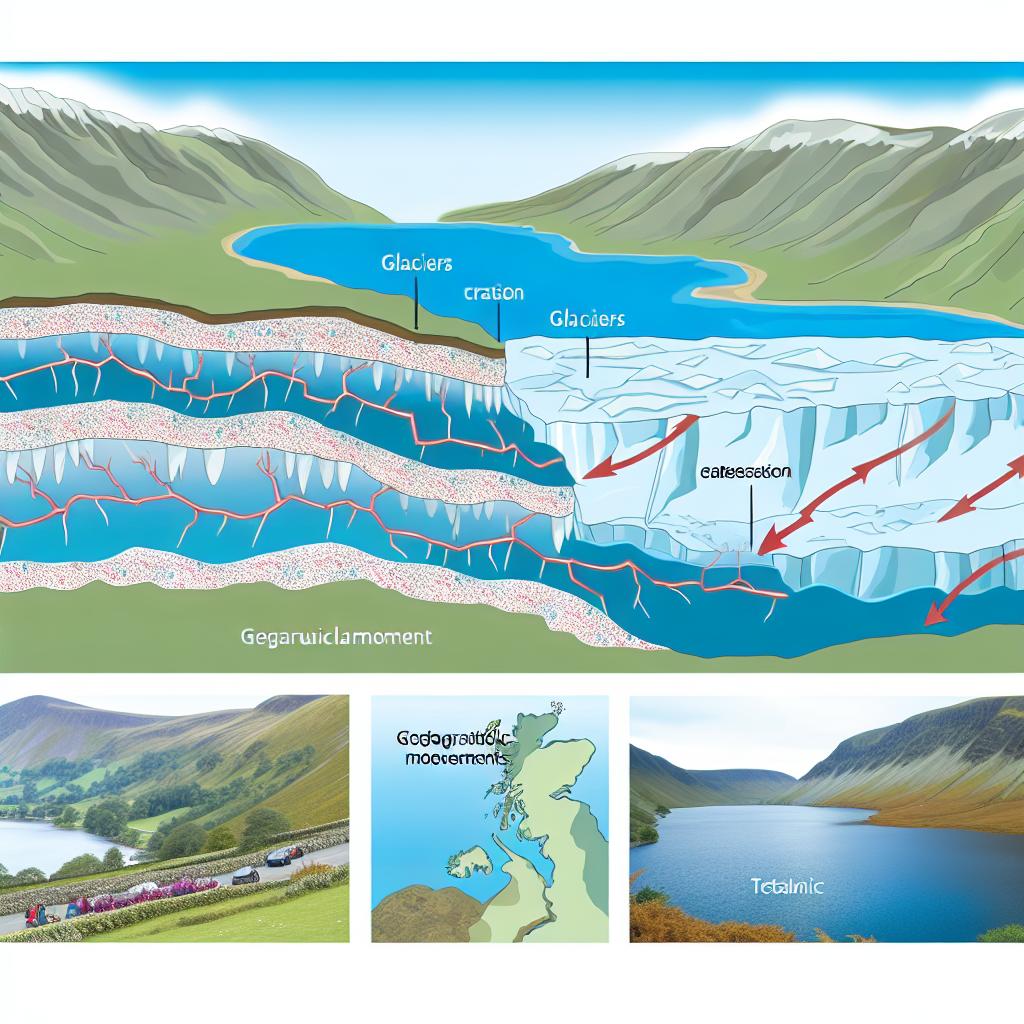Introduction to Lake Formation in the UK
The United Kingdom, a land marked by its rich tapestry of natural landscapes, is home to a diverse array of lakes also known as “lochs” in Scotland. These bodies of water have been shaped by an intricate interplay of various geological and climatic processes over thousands of years. Understanding the formation of these lakes is essential for gaining insight into the UK’s natural landscape and geological history. Through a closer examination of these processes, one can appreciate the perennial influence of natural forces and human interventions in shaping the country’s water bodies.
Glacial Activity
One of the primary forces responsible for the formation of many UK lakes is glacial activity. During the last Ice Age, which occurred approximately 20,000 years ago, enormous ice sheets covered significant portions of the British Isles. As these glaciers advanced and retreated, they performed a dual role of erosive carving and depositional filling, creating unique topographical features.
In particular, as glaciers move, they carve out deep basins into the bedrock with their sheer weight and gradual movement across the landscape. This erosive action is primarily responsible for some of the UK’s most renowned lake districts. For instance, the Lake District in England, which contains a collection of the nation’s most scenic lakes, owes much of its reputation to the dynamic processes of glacial erosion. These geological transformations resulted in the creation of its picturesque valleys and dramatic water basins, offering a striking display of natural art formed over millennia.
Moraines and Tarn Formation
Aside from their direct erosive action, glaciers have contributed indirectly to lake formation through the creation of moraines. These are accumulations of earth and stones that have been carried along by moving glaciers. When glaciers melt, they leave behind these formations, which can act as natural dams, impounding water and creating lakes known as tarns. These small, often circular mountain lakes are common in regions such as the Lake District and highlight the profound impact of glaciation on the British landscape.
River Processes
Beyond the effects of glaciers, river processes have also played a vital role in the development of the UK’s lakes. The natural flow and erosive power of rivers can lead to the creation of oxbow lakes. These crescent-shaped lakes form when a river seeks a more direct course over time, abandoning its meandering sections. This process is more prominent in the flatter regions of the UK.
Moreover, rivers often contribute to lake formation through the processes of natural damming and the overflow of water bodies. In certain instances, sediments carried by a river may accumulate to form a dam-like structure, causing water to pool and create a lake. Similarly, the overflow of existing river waterways can flood adjacent low-lying areas, thus giving rise to new lakes. Together, these river processes highlight the dynamic interplay between water and land, continually reshaping the environment.
Volcanic Activity
Although less common than glacial and river-induced lakes, volcanic activity has also contributed to the formation of lakes within the UK. Caldera lakes form in volcanic craters, resulting from significant volcanic activity in the past. When a volcano erupts and partially collapses, a large depression, or caldera, is left behind. If this depression subsequently fills with water, a caldera lake is formed. While such formations are more prevalent in other regions of the world, they exemplify the diverse geological processes that can lead to the development of lake ecosystems.
Human Influence
In more recent centuries, the hand of humanity has increasingly left its mark on the landscape, influencing lake formation in profound ways. Human activity has led to the creation of artificial lakes, often in the form of reservoirs. These man-made water bodies have been constructed for a variety of purposes, including water management, irrigation, and recreational activities.
Reservoirs are essential in supporting modern infrastructure and meeting community needs, acting as vital resources for water supply, electricity generation, and flood control. Although they lack the natural beauty and historical essence of naturally formed lakes, they are integral to maintaining the functionality and sustainability of contemporary human settlements.
Conclusion
The lakes of the United Kingdom have been shaped by the concerted efforts of natural forces over eons, joined more recently by human ingenuity. The intricate tapestry woven by glacial and river activity, with the occasional input of volcanic eruptions and human construction, offers a rich variety of lake forms and landscapes. Each formation process contributes a unique character to the environment, enhancing the diversity and beauty of the UK’s natural scenery.
Exploring these lakes provides both a glimpse into the geological past and an appreciation for the dynamic processes that continue to shape our world. With each visit to a UK lake, one observes not only a tranquil water body but also a complex natural history that speaks volumes about the Earth’s constant evolution.
For further reading on the impact of glaciers on landscapes, you can explore more detailed information here.
